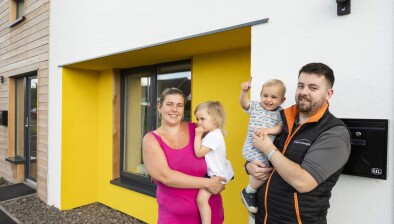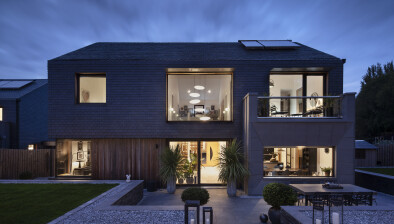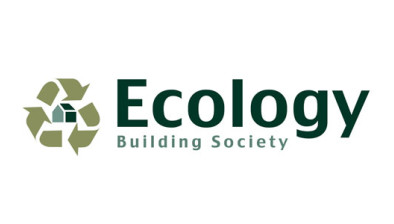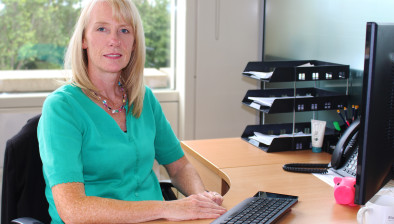Emily Ong: Insights from Scotland’s largest Passivhaus residential development
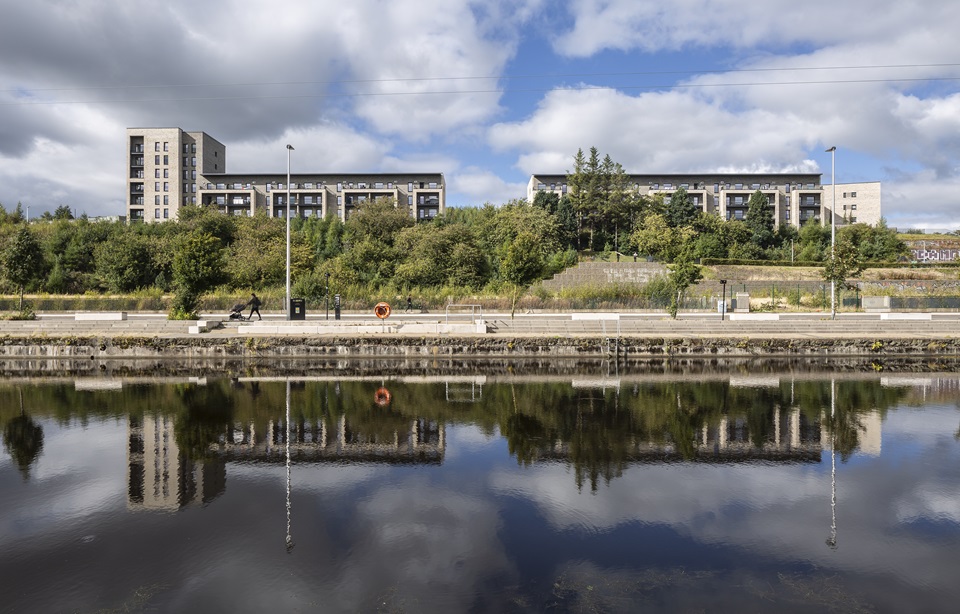
Dundashill (Image credit: Collective Architecture/Keith Hunter)
Drawing on data from Dundashill Platform 3 in Glasgow, Emily Ong, Passivhaus designer and architect at Collective Architecture, reveals why investing in Passivhaus brings long-term savings.
It is estimated that 34% of households in Scotland are currently living in fuel poverty and 19.4% of households are living in extreme fuel poverty. Passivhaus standard homes can cut heating bills by up to 79% compared to the current Scottish building standards.
The Dundashill Platform 3 affordable mid-rent project in Glasgow, for West of Scotland Housing Association, is Scotland’s largest Passivhaus-certified residential project to date.
Setting out to be a resilient, low-energy development supporting long-term affordability and carbon reduction, residents at Scotland’s largest Passivhaus development to date have started to share their experiences of living in the ultra-low energy apartments
What residents are saying
Post-occupancy monitoring on the West of Scotland Housing Association (WSHA) project is underway and is already highlighting lower energy bills, stable indoor temperatures, and better air quality. Anecdotal evidence is showing the housing is delivering what it set out to do in terms of low energy bills.
One resident has reported in early 2025 having electricity bills (including heating and hot water) of £54 a month and in April as the weather started warming up, the overall energy bill was £36. Other resident feedback has included mention of low energy bills: “One of the highlights is that my energy bills are really low, which is night and day from my previous home.”
Another resident reports: “My energy bills are only £41 per month, this is £150 less than my energy bill from my last home. This extra income has really helped with the cost-of-living increases.” Others have mentioned how little they have to put the heating on at all “We’ve never really put our heating on, so our energy bills are fairly low. I don’t think we’ll need to have the heating on that often.”
Delivering to the Passivhaus standard brings long-term benefits, reducing operational carbon and helping address fuel poverty through significantly lower energy bills. In the current climate of rising energy costs, lower energy bills offer direct financial relief to households, supporting more stable month-to-month budgeting.
Dundashill Platform 3 demonstrates how housing can be affordable, adaptable, and climate-conscious without compromising on design or quality. Hearing from the residents that they feel comfortable in their homes is really positive. The residents’ health and wellbeing is the most important outcome.
Brian Gannon, outgoing chief executive officer of WSHA, has also commented: “It’s one of the best developments we’ve ever done. For us as a housing association, probably the key success is having new tenants move into these properties who absolutely love it.”

Emily Ong
Ongoing monitoring
A total of 27 Dundashill residents have agreed to have their homes’ temperature, humidity and energy usage recorded by small monitors in their flats. This data will support seasonal performance analysis, with planned distribution of detailed winter and summer occupant feedback questionnaires. Additionally, one-on-one interviews will be undertaken to gather qualitative feedback on thermal comfort. This post-occupancy data will be shared once it has been fully gathered and evaluated.
Invest now, save for decades
Dundashill has been delivered affordably with estimated construction costs of around £2,235/m². Typically, the uplift costs to build to the Passivhaus standard come in at around 4-8% extra, with any additional costs recouped over time through drastically reduced energy bills. Lower maintenance and rent arrears, reduced strain on the grid, and health benefits of good indoor air quality and the elimination of mould are all additional benefits that Passivhaus brings.
Alex Rowley MSP, who has spearheaded the move to a Scottish Passivhaus Equivalent standard in Scotland, is quoted as saying “Building a Passivhaus is the epitome of a spend to save approach. By investing now, we save both financially and environmentally over the term of the project.”
Scottish Passivhaus Equivalent
Dundashill is offering a fantastic insight into the benefits of living in a Passivhaus home. It demonstrates that Passivhaus can be delivered affordably at scale without compromising comfort or quality through smart design strategies and efficient construction. For residents, these homes offer meaningful relief from fuel poverty and improved wellbeing.
As Scotland gears up for its next Scottish Passivhaus Equivalent policy consultation, we are looking to policymakers to ensure that all new homes will be built to similar rigorous standards, to ensure warm, comfortable and affordable homes for all. The Scottish Passivhaus Equivalent is a proposed regulatory framework that aims to embed the principles of the Passivhaus standard into national building regulations, promoting energy efficiency, comfort, and long-term affordability. It has been encouraging to see cross-industry consensus emerging around the Scottish Passivhaus Equivalent policy from a Scottish Building Standards working group and we look forward to these suggestions being implemented.
The feedback from residents at Scotland’s largest Passivhaus residential development should act as a testimony as to why Scotland needs to deliver a true Passivhaus equivalent!




